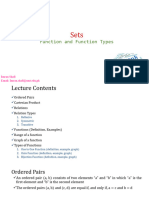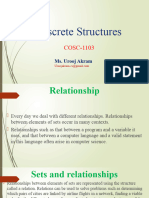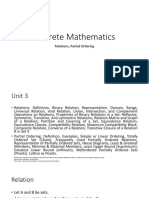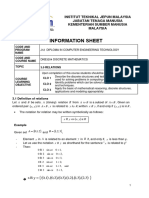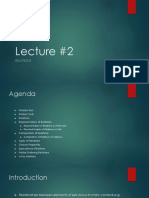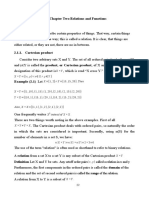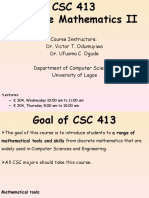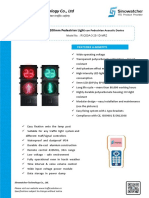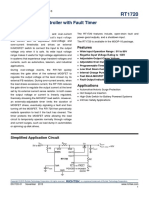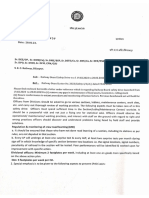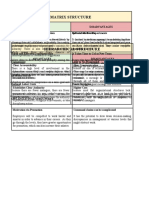0% found this document useful (0 votes)
11 views85 pagesLecture Notes 10 - Relations
The document discusses the concept of relations in discrete structures, focusing on ordered pairs, Cartesian products, and binary relations. It includes exercises and examples to illustrate how to find relations, domains, and ranges, as well as methods for representing relations through matrices and directed graphs. Additionally, it touches on properties of relations such as reflexivity.
Uploaded by
mubashir.sagittariusCopyright
© © All Rights Reserved
We take content rights seriously. If you suspect this is your content, claim it here.
Available Formats
Download as PPTX, PDF, TXT or read online on Scribd
0% found this document useful (0 votes)
11 views85 pagesLecture Notes 10 - Relations
The document discusses the concept of relations in discrete structures, focusing on ordered pairs, Cartesian products, and binary relations. It includes exercises and examples to illustrate how to find relations, domains, and ranges, as well as methods for representing relations through matrices and directed graphs. Additionally, it touches on properties of relations such as reflexivity.
Uploaded by
mubashir.sagittariusCopyright
© © All Rights Reserved
We take content rights seriously. If you suspect this is your content, claim it here.
Available Formats
Download as PPTX, PDF, TXT or read online on Scribd
/ 85






